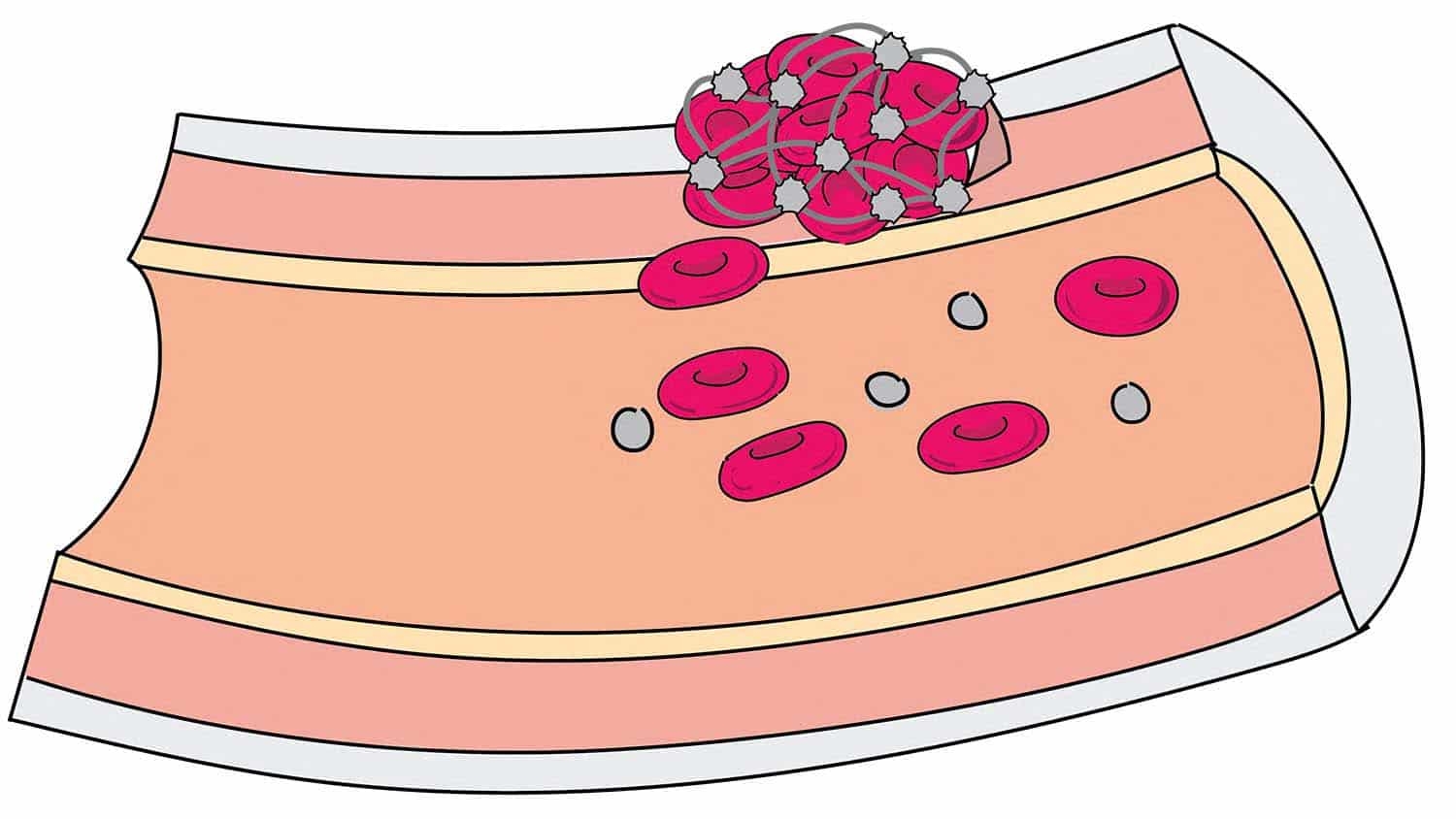Antiferroelectric materials have electrical properties that make them advantageous for use in high-density energy storage applications. Researchers have now discovered a size threshold beyond which antiferroelectrics lose those properties, becoming ferroelectric.
“Electronic devices are getting smaller and smaller, which makes it increasingly important for us to understand how a material’s properties may change at small scales,” says Ruijuan Xu, corresponding author of a paper on the work and an assistant professor of materials science and engineering at North Carolina State University. “In this case, we learned that when antiferroelectric thin films get too thin, these materials go through a phase transition and become ferroelectric. That makes them less useful for energy storage, but creates some new application possibilities for memory storage.”
This research focused on antiferroelectric materials. These materials have a crystalline structure, which means they consist of regularly repeating units. Each repeating unit in the crystalline structure has a “dipole” – a positive charge paired with a negative charge. What makes antiferroelectric materials special is that those dipoles alternate from unit to unit throughout the structure. In other words, if one unit has a positive charge on “top” and a negative charge on the “bottom,” then the next unit will have the positive charge on the “bottom” and the negative charge on “top.” This regular spacing of the dipoles also means that, at the macroscale, antiferroelectric materials have no positive or negative polarization.
Ferroelectric materials also have a crystalline structure. But in ferroelectrics, the dipoles in the repeating units all point the same way. What’s more, you can reverse the polarization of the dipoles in ferroelectric materials by applying an electric field.
To explore how an antiferroelectric material’s properties may change at small scales, the researchers focused on lead-free sodium niobate (NaNbO3) membranes.
Antiferroelectric thin films are grown on a substrate. Previous attempts to assess potential size-related effects on antiferroelectric thin films have looked at the thin films while the films are still attached to the substrate layer. This poses significant challenges, because there are “strains” where the thin film is strongly connected to the substrate – and it is difficult to assess what effects are related to the thin film’s size and what effects are caused by the strains related to the substrate.
“To address this challenge, we introduced a sacrificial buffer layer between the antiferroelectric thin film and the substrate,” Xu says. “Once we had grown the thin film to the desired thickness, we selectively etched the sacrificial layer. This allowed us to detach the thin film from the substrate. Ultimately, this allowed us to determine how any changes in the thin film are affected by its size, because we knew the substrate was not contributing to any changes.”
The researchers then used a variety of experimental and theoretical approaches to assess these strain-free samples at thicknesses ranging from 9 nanometers (nm) to 164 nm.
“The results were quite unexpected,” Xu says.
“We know that at the atomic scale, antiferroelectric materials – like lead-free NaNbO3 membranes – have alternating dipoles throughout the material. We found that when the NaNbO3 membranes were thinner than 40 nm, they become completely ferroelectric. And from 40 nm to 164 nm, we found that the material had some regions that were ferroelectric, while other regions were antiferroelectric.”
Using their experimental data, the researchers extrapolated there would be at least some ferroelectric regions in the NaNbO3 at any thickness below 270 nm.
“One of the exciting things we found was that when the thin films were in the range where there were both ferroelectric and antiferroelectric regions, we could make the antiferroelectric regions ferroelectric by applying an electric field,” Xu says. “And this change was not reversible. In other words, we could make the thin film completely ferroelectric at thicknesses of up to 164 nm.”
The researchers were also able to draw some conclusions on what is driving these changes in the antiferroelectric material.
“Drawing on first principles, we were able to conclude that the phase changes we see in exceptionally thin antiferroelectric materials are driven by structural distortion that begins on the membrane’s surface,” Xu says.
In other words, instabilities at the surface have a ripple effect that runs throughout the material – which isn’t possible when the volume of the material is higher. That’s what prevents antiferroelectric materials from becoming ferroelectric at larger scales.
“I don’t want to speculate too much about potential applications, but our work offers significant insights into how we can control a material’s properties by taking advantage of size effects,” Xu says. “We’ve demonstrated significant size effects in NaNbO3, and the techniques we used to uncover those effects can be used to explore similar questions for a range of other materials.”
The paper, “Size-Induced Ferroelectricity in Antiferroelectric Oxide Membranes,” is published open access in the journal Advanced Materials. The paper was co-authored by Yin Liu, an assistant professor of materials science and engineering at NC State; Kevin Crust, Varun Harbola, Woo Jin Kim, Aarushi Khandelwal, Harold Hwang, Melody Wang and X. Wendy Gu of Stanford University; Rémi Arras of the Université de Toulouse; Kinnary Patel, Sergey Prosandeev and Laurent Bellaiche of the University of Arkansas; Hui Cao and Hua Zhou of Argonne National Laboratory; Yu-Tsun Shao and David Muller of Cornell University; Piush Behera, Megha Acharya and Lane Martin of the University of California, Berkeley; Lucas Caretta of Brown University; Edward Barnard and Archana Raja of Lawrence Berkeley National Laboratory; and Ramamoorthy Ramesh of Rice University. Ruijuan Xu, Kevin Crust, and Varun Harbola contributed equally to this work.
The work was done with support from the U.S. Department of Energy under grant number DE-AC02-76SF00515; the U.S. Army Research Office under the MURI ETHOS, via cooperative agreement W911NF-21-2-0162; and the U.S. Air Force Office of Scientific Research Hybrid Materials MURI, under award no. FA9550-18-1-0480.
-shipman-
Note to Editors: The study abstract follows.
“Size-Induced Ferroelectricity in Antiferroelectric Oxide Membranes”
Authors: Ruijuan Xu, North Carolina State University and Stanford University; Kevin Crust, Varun Harbola, Woo Jin Kim, Aarushi Khandelwal, Harold Hwang, Melody Wang and X. Wendy Gu, Stanford University; Rémi Arras, Université de Toulouse; Kinnary Patel, Sergey Prosandeev and Laurent Bellaiche, University of Arkansas; Hui Cao and Hua Zhou, Argonne National Laboratory; Yu-Tsun Shao and David Muller, Cornell University; Piush Behera, Megha Acharya and Lane Martin, University of California, Berkeley; Lucas Caretta, Brown University; Yin Liu, North Carolina State University; Edward Barnard and Archana Raja, Lawrence Berkeley National Laboratory; Ramamoorthy Ramesh, Rice University.
Published: Feb. 4, Advanced Materials
DOI: 10.1002/adma.202210562
Abstract: Despite extensive studies on size effects in ferroelectrics, how structures and properties evolve in antiferroelectrics with reduced dimensions still remains elusive. Given the enormous potential of utilizing antiferroelectrics for high energy-density storage applications, understanding their size effects would provide key information for optimizing device performances at small scales. Here, we investigate the fundamental intrinsic size dependence of antiferroelectricity in lead-free NaNbO3 membranes. Via a wide range of experimental and theoretical approaches, we probe an intriguing antiferroelectric-to-ferroelectric transition upon reducing membrane thickness. This size effect leads to a ferroelectric single-phase below 40 nm as well as a mixed-phase state with ferroelectric and antiferroelectric orders coexisting above this critical thickness. Furthermore, we show that the antiferroelectric and ferroelectric orders are electrically switchable. First-principle calculations further reveal the observed transition is driven by the structural distortion arising from the membrane surface. Our work provides direct experimental evidence for intrinsic size-driven scaling in antiferroelectrics and demonstrates enormous potential of utilizing size effects to drive emergent properties in environmentally benign lead-free oxides with the membrane platform.
This post was originally published in NC State News.
- Categories:



